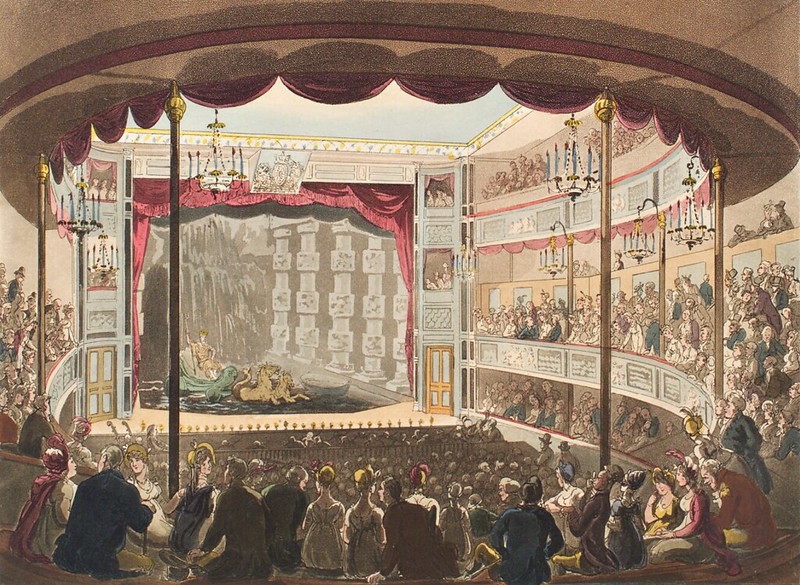Giovanni Battista Martini (1707-1784) - La Dirindina (1737)
Performers: Tullia Pedersoli (soprano); Carlo Torriani (bass); Filippo
Pina Castiglioni (tenor);
Camilla Antonini (mezzo-soprano); Paola
Quagliata (mezzo-soprano);
I Solisti Ambrosiani; Enrico Barbagli
(conductor)
---
Italian writer on music, teacher and composer. Referred to at his death
as ‘Dio della musica de’ nostri tempi’, he is one of the most famous
figures in 18th-century music. He had his first music lessons from his
father Antonio Maria, a violinist and cellist; subsequent teachers were
Angelo Predieri, Giovanni Antonio Ricieri, Francesco Antonio Pistocchi
and Giacomo Antonio Perti. In 1721, he was sent to the Franciscan
Conventual monastery in Lugo di Romagna. He returned to Bologna towards
the end of 1722 and played the organ at S Francesco. In 1725 he
succeeded Padre Ferdinando Gridi as maestro di cappella of S Francesco.
He occupied that post until the last years of his life, and lived in the
convent attached to the church. Martini received minor orders in 1725,
and four years later was ordained a priest. His first extant works date
from 1724 and the first publication of his music appeared in 1734,
Litaniae atque antiphonae finales Beatae Virginis Mariae; only three
other collections of his music, all secular, were published during his
lifetime. In 1758, he was made a member of the Accademia dell’Istituto
delle Scienze di Bologna. In the same year he was also admitted to the
Accademia Filarmonica. Martini’s relationship with the Accademia is a
matter of controversy. He was certainly not the author of the Catalogo
degli aggregati della Accademia filarmonica di Bologna, an important
manuscript long attributed to him but actually by O. Penna (c.1736). In
any case, Martini seems to have remained somewhat independent of the
Accademia and its members. In 1776 he was elected a member of the
Arcadian Academy in Rome, with the name Aristosseno Anfioneo. Martini
devoted himself assiduously to composing, writing and teaching, and he
seldom left Bologna. He visited Florence, Siena and Pisa in 1759, and
Rome. He was offered positions in the Vatican, but he chose to remain in
the city of his birth.
Although he lived to the age of 78, he
apparently suffered from poor health, which may account for the fact
that he travelled so little. According to contemporary accounts,
Martini’s pupil and successor at S Francesco, Padre Stanislao Mattei,
was alone with him when he died; Martini’s last words to Mattei were
reported to have been: ‘Muoio contento; so in che mani lascio il mio
posto ed i miei scritti’
Although the extent of his teaching activities with individual students
is not always clear, at least 69 composers learnt substantially from him
and 35 others received some less clearly defined instruction. Among the
former were J.C. Bach, Bertoni, Grétry, Jommelli, Mozart and Naumann;
Martini taught them primarily counterpoint, often preparing advanced
students for admission to the Accademia Filarmonica. He also devoted
some time to singing instruction, as witness a number of surviving
solfeggi. Martini’s network of students was important for his activity
as a collector of music and music-related documents; he probably used
income from teaching to increase his music library, which was estimated
by Burney at about 17,000 volumes in 1770. One of Martini’s most
important legacies is his extensive correspondence (about 6000 letters),
only a small part of which has been published. He was also famed for
his collections of music and portraits of composers, over than 300
portraits, many of whom were commissioned at his behest. As a
theoretician, his most famous work was the unfinished Storia della
musica, which purported to begin with Adam and end with an overview of
modern 18th-century composers and styles. Martini was considered the
model by Charles Burney, who consulted the theorist on his own
endeavors. As a composer, Martini was less well known with circa 1500
extant works; 32 Masses, five operas, two oratorios, a Requiem, a
litany, over 100 smaller sacred works, 24 symphonies, 94 keyboard
sonatas, a variety of smaller chamber works and hundreds of organ
canons.

Cap comentari:
Publica un comentari a l'entrada